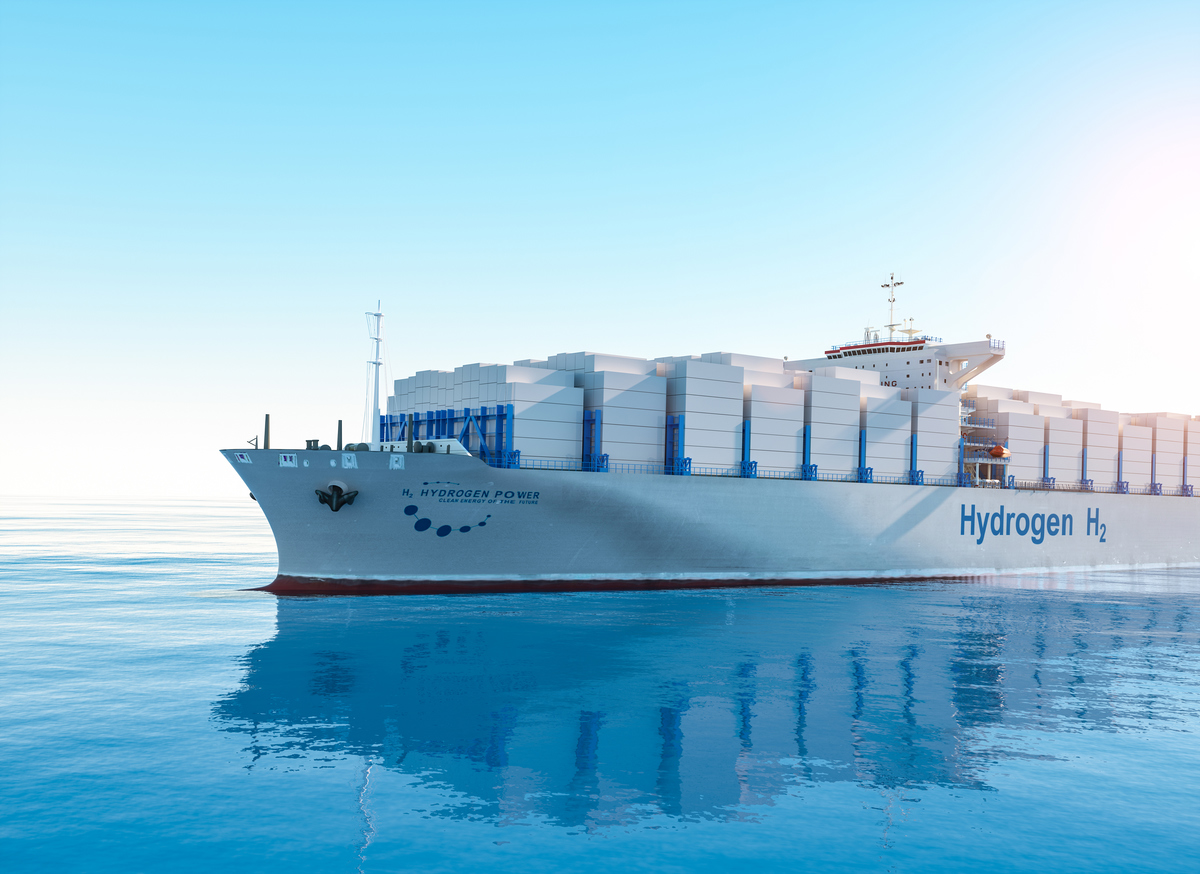The e-fuels proposal in the pending FuelEU Maritime regulation explained - T&E
As the European legislative trio gears up to finalise the FuelEU Maritime regulation this year, environmental organisation Transport and Environment (T&E) has answered frequently asked questions on the sub-quota for renewable e-fuels in the proposal.

PHOTO: Getty Images
The European Parliament approved a draft of the FuelEU Maritime regulation last October. In the draft regulation there was a proposed mandate for companies that operate at least three ships larger than 5,000 gross tonnes (GT) to use at least 2% renewable fuels of non-biological origin (RFNBOs) by 2030. These are typically hydrogen-derived e-fuels such as pure hydrogen, ammonia and methanol.
Unlike biofuels produced from biomass, e-fuels are gas or liquid fuels produced from renewable energy sources or decarbonised electricity.
According to the EU's Renewable Energy Directive, RFNBOs and recycled carbon fuels must achieve minimum greenhouse gas (GHG) emission savings of 70% to meet the regulatory criteria.
T&E, which is Europe’s umbrella organisation for sustainable transport non-governmental organisations, has now issued a document covering the frequently asked questions related to this particular mandate. The trio of the European Commission, European Parliament and the Council of EU member states is expected to make a final decision on the proposed FuelEU Maritime regulation early this year.
As the EU has subsidised LNG and biofuels for about a decade, T&E argues, these fuels typically have lower production costs than RFNBOs. This could continue to make them more cost-effective alternatives for shipping companies to reduce their GHG emissions to meet upcoming EU mandates.
Therefore, the European Parliament proposed a 2% RFNBOs sub-quota to "correct the level playing field and guarantee a minimum uptake of green hydrogen-based fuels," according to T&E.
T&E adds that this 2% sub-quota would “create a demand for around 21.5 petajoules (PJ) of RFNBOs for European shipping that would guarantee a market demand of about 205,000 mt of green hydrogen by 2030.”
Moreover, T&E suggests that all shipowners should be mandated to meet this 2% sub-quota - not just operators of at least three ships above 5,000 GT.
T&E says that ship operators could develop a "pooling system" for complying with the sub-quota. This has also been called "insetting" and is a concept in which a minimum fuel mandate can be met on a fleet level, or between fleets, rather than on an individual ship basis.
"This flexibility option was designed by the European Commission precisely to avoid situations where every ship complies with the GHG intensity targets by blending minimum amounts of alternative fuels, and incentivise instead compliance with new, fully renewable ships," T&E explains.
In a recent interview with ENGINE, Yara Clean Ammonia’s president Magnus Krogh Ankarstrand estimated that the production cost of green ammonia will be north of $1,000/mt from 2024. More efficient electrolysers and economies of scale can then bring down the capital expenditure for electrolysis down 60-70% by 2040, which could contribute to halve green ammonia production costs to around $500/mt.
Ankarstrand argued that blue ammonia, in which ammonia is produced with fossil fuels but with carbon capture, will likely be a more cost-effective long-term production method than green ammonia.
By Konica Bhatt
Please get in touch with comments or additional info to news@engine.online





